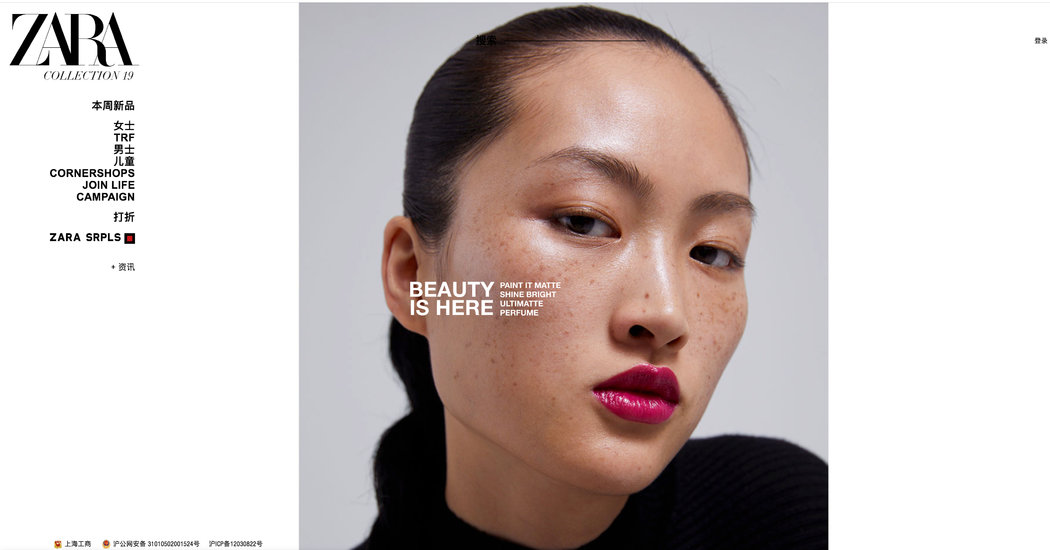
HONG KONG — Jing Wen, 25, has modeled for Chanel and Prada and appeared on the cover of Vogue in China and Italy. But on Chinese social media, images of her freckled face have provoked a storm of outrage and abuse, spreading under the hashtag “Insult to China.”
The model, known in China by her full name, Li Jingwen, appears in a campaign for the Spanish fashion brand Zara with her lips a striking crimson and the rest of her face bare — leaving her freckles on full display.
The online response in China, where freckles are relatively uncommon and fashion images favor smoothly pale skin, has been fierce. Some users have accused Zara of imposing white beauty standards on Chinese women; others have come to Ms. Li’s defense and questioned the ideals driving the backlash.
One commenter objecting to the image wrote, “Why are freckled faces misconstrued as high fashion?”
“So that’s how you see Asian women?” another added. “I’ve lost all desire to buy things.”
A third said the image was “just the West’s beauty standards for Asians, very different from ours,” adding, “For those women to be called the most beautiful in Asia feels like discrimination to the rest of us.”
But Ms. Li also had her defenders. “This Chinese model has received the worst malice from her own people,” one response said.
Another commenter wrote, “I feel it’s not the brand discriminating against Asian women, but people discriminating against people with freckles.”
Maya Yu Zhang, a 27-year-old Chinese filmmaker, said the anger at the images stemmed from a desire for global brands to portray them in familiar ways, according to their own beauty standards.
Ms. Zhang, who is based in New York, has made films exploring conformist notions of beauty, including one that includes her own mother insisting that she get beauty marks removed.
“Chinese people sometimes forget how diverse we actually are,” she said. “We’re not a monolith.” She also expressed hope that the tenor of the debate would become more open-minded.
Ma Heqi, a 24-year-old from Dalian, a city in northeast China, said she had tried to remove her freckles — known as “sparrow marks” in China — with laser therapy. “Even though I went overseas to study, I still find the existence of freckles on my face quite unpleasant,” she said, adding that some had called them “pockmarks.”
Jia Tan, an assistant professor of cultural studies at the Chinese University of Hong Kong, noted that there was a long tradition that “measures nonwhite women’s beauty according to its approximation to white beauty,” with depictions sometimes veering into the territory of racist tropes. However, she said, the online backlash in this case “fell right into the rhetoric of nationalism and patriotism.”
Chinese state-run news media covered the controversy, but seemed disinclined to whip up further outrage.
An opinion writer in China Daily, an official English-language broadsheet, accused online critics of the Zara images of “over-sensitivity and a lack of cultural confidence,” while an op-ed in China Youth Daily, published by the Communist Youth League, called for an overhaul in beauty standards.
“Some people can see Li Jingwen’s distinctive beauty, while others read it as ‘an insult to China,’ ” Yang Xinyu wrote in China Youth Daily. “The contrast begs an interrogation of our aesthetic ideals.”
Ms. Li, a photographer herself, has not publicly commented on the response to the Zara images, but she did speak about her freckles in a 2016 interview with Vogue.
“When I was little, I really hated them because normally Asians don’t have them,” she said. “In high school, I always tried to cover them, but now it’s O.K. I like them, and that’s enough.”







